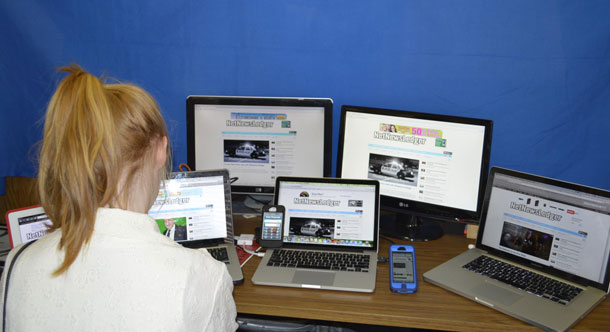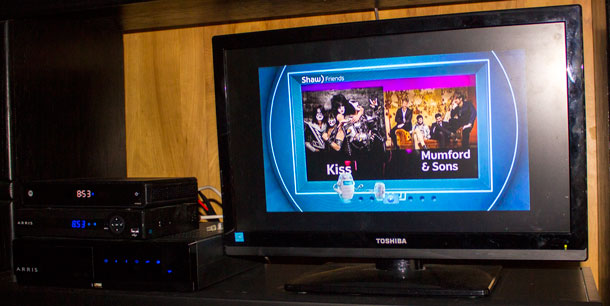
The Digital Economy is THE Next Big Thing
STAMFORD – Are you reading this on your smartphone? Your new iPad, iPod, Galaxy phone or new Blackberry? You are not alone. There is a huge shift ongoing in the media from desktop to handheld devices. That growth is continuing at an ever faster rate. The digital economy is growing. Desktop computers are losing out to laptops, and laptops are losing out to tablets. The growth of handheld devices is massive.
The PQ Media Global Consumer Usage of Digital Media Forecast 2013-17 states, “Consumer digital media usage worldwide is on pace to grow 11.8% in 2013, driven by double-digit gains in time spent with 14 of the 21 online, mobile and other digital media channels. Surging global demand from iGens, Millennials and GenXers for online and mobile video, social media and games, as well as over-the-top (OTT) video will boost consumer digital media usage this year to an average of 6.0 hours per week”.
The growth is being partly fuelled by better smartphone plans, with consumers gaining more data access. For growing numbers of consumers, having access at their fingertips for information is increasingly import.
The New Economy is Here Now
People are trending toward a changing digital market and embracing the change as fast as experts are expecting.
This report is the second in a three-part research series examining the global transition of consumers, media operators and brand marketers to digital media by country, medium and generation in the 2007-17 period. For this report, PQ Media segmented consumer digital media usage by three overall platforms (internet, mobile, other digital media) and 21 specific channels, such as online video, mobile social media, OTT video and digital out-of-home (DOOH) media.
Consumer internet media usage is trending up 10.7% in 2013 to a weekly average of 2.8 hours worldwide, accounting for 46.7% of all time spent with digital media. Key growth drivers are technology and network upgrades in emerging BRIC markets providing end users with faster access to dynamic content. Mobile media consumption worldwide is pacing for 17.9% growth to an average of 1.3 hours, a 21.7% share of digital media usage, according to the PQ Media Global Consumer Usage of Digital Media Forecast 2013-17. Consumers in several of the world’s 15 leading markets are accelerating the transition to smartphones, while US demand for computer tablets is growing. Consumer time spent with other digital media, including OTT video, DOOH media and console videogames, is on track for a 9.4% increase to 1.8 hours this year.
Live Television Trending Flat
While global digital media usage continues to rise at double-digit rates, traditional media consumption is pacing for decelerated 1.3% growth in 2013, due to live TV trending flat. Accordingly, consumer media usage trends are mirroring those of global media operator revenue.
Television in the traditional sense isn’t dead.

In Thunder Bay between smart devices, the Digital Television from Tbaytel that includes a free DVR, and the new Shaw Gateway that allows up to six programs to be recorded, consumers are increasingly able to choose their media, and then blast past the commercials.
Choosing when to watch, and being able to enjoy video on demand is changing how people watch television.
Digital media revenues are on track for 13.6% growth worldwide this year compared with only a 2.2% increase in traditional media revenues, according to the first report in PQ Media’s series, the Global Digital & Alternative Media Revenue Forecast 2013-17.
World Wide Trends Are Important
In this report, PQ Media found that global digital media revenues surpassed TV revenues for the first time in 2010, snaring $3 billion more in revenues. By year-end 2012, digital media revenues exceeded TV by $33 billion, and PQ Media expects digital media revenues to grow at double-digit rates through 2017.
Traditional media garnered the vast majority of overall time spent on media in 2012, averaging 37.9 hours per week, or 87.6% of total media consumption. Nevertheless, the consumer transition to digital media, particularly among younger generations, is gaining momentum. Consumer digital media usage accounted for 12.4% of global time spent with media in 2012, nearly double its share in 2007, while digital media’s share of total media revenues almost doubled to 22.9%, PQ Media found.
“The ability of digital media to effectively target and engage on-the-go consumers is the key driver behind the gains in share of total media usage and revenues,” said Patrick Quinn, CEO, PQ Media. “While traditional media still accounts for the lion’s share of media consumption, the amount of time post-Boomer generations spend on digital media is increasing at double-digit rates, hastening the shift of advertising and marketing dollars.”
PQ Media found that GenX led all other age groups with a global average of 6.6 hours of digital media consumption in 2012, followed by Baby Boomers at 5.9 hours. However, the ranking is skewed by BRIC countries, where older, wealthier consumers are more able to afford expensive digital devices. Even so, digital media accounts for the largest share of overall time spent with media among all three post-Boomer generations in developed markets. GenX or Millennials rank first or second in digital media consumption in the US, the UK, Australia and South Korea. iGen, the youngest group, leads the world with the highest digital media share of total media usage at 19.1%.
Consumers in four of the world’s 15 largest media economies averaged more than 15 hours per week using digital media in 2012, led by Australia at 15.8 hours, South Korea (15.7 hours), the UK (15.2 hours) and Japan (15.0 hours), according to PQ Media Global Consumer Usage of Digital Media Forecast 2013-17. US digital media usage increased 6.6% to an average of 13.8 hours weekly, placing it fifth globally. Several commonalities exist among these markets, including high broadband and smartphone penetration; growing demand for tablets; young men who are avid videogamers; and various choices of OTT video services.
Emerging Markets Require Investment in Technology
But low penetration rates in emerging markets have resulted in their governments and telecommunications operators investing to improve technology and systems, driving the world’s highest growth rates for digital media usage, led by Russia at 19.4% in 2012, India (16.4%), Brazil (16.3%) and China (15.5%). South Korea leads the world in digital media share of total media usage at 28.0%, followed by Australia (25.5%), the UK (22.8%) and the US (21.7%), according to PQ Media.
Northwestern Ontario Poised For Success
In Northwestern Ontario, the NAN Broadband project started under the leadership of Chief Stan Beardy will bring fiber optic Internet access to Northern Ontario’s most remote communities. In November 2011, Chief Beardy stated, ““This Initiative is a prime example that when mutually beneficial partnerships are developed between First Nations and the private and public sectors, great success can be achieved,” said NAN Grand Chief Stan Beardy. “As part of the plan to improve broadband services, First Nation communities have the opportunity to capture the economic spinoffs in terms of employment and training, preparing them for any future endeavours in NAN territory. We are very pleased with the work being done so far, and look forward to capitalizing on the benefits that will derive from having greater access to the World Wide Web.”
The solutions require partnerships with wireless companies, consumers, governments and business. Building to the future means adopting new ideas faster than ever before.
The marketplace will demand it.













